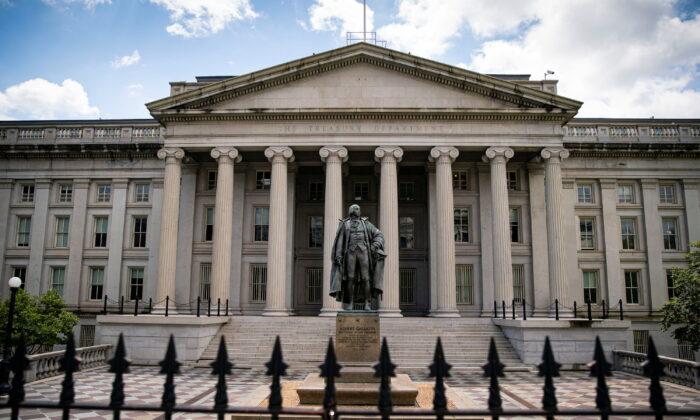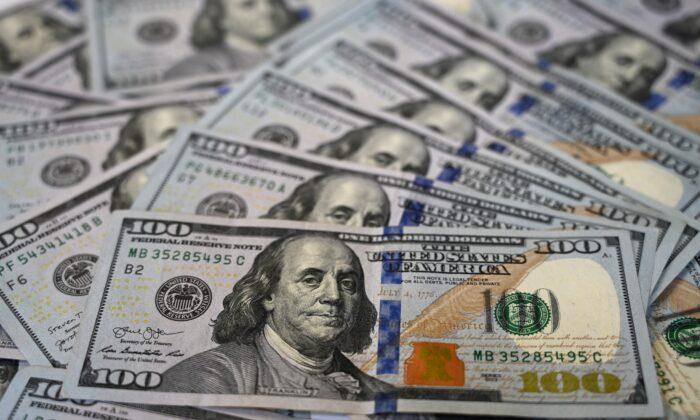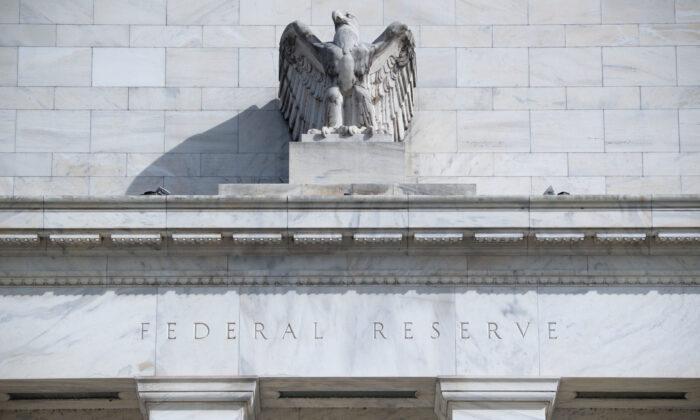Last summer, President Biden and a majority in Congress celebrated legislative victories over major increases in federal spending. My Epoch Times article last August described the celebrations as pyrrhic victories. The celebrations would end as the damage from these policies became apparent.
The explosive increased in federal spending
The Biden Administration’s took the temporary emergency spending from Covid and made it a permanent part of the federal budget. The following table shows the extent to which the combination of new federal programs has raised total spending.In 2019 federal spending was 21% of our total gross domestic product (GDP). As the economy slumped amid the lockdown, federal spending soared to 31% of GDP. Despite of the 2021 recovery, federal spending remained at 30%--due to ongoing Covid-related expenses and the initial spending from the American Rescue Plan. Subsequent legislation in fiscal 2022 kept federal spending at 25% of GDP.
How Federal Spending Damages the Economy
Throughout history excessive increases in federal spending have led to serious economic consequences. My book, Rich Nation, Poor Nation: Why Some Nations Prosper and Others Fail, details the damage to the US when federal spending increased faster than spending in the rest of the economy. Even when a surge in federal spending was necessary, such as with World War II, the damage to real incomes was extensive.Four periods where federal spending exceeded private spending were 1913-1920, 1929-1940, 1965-1980, and 2004-2016. Each of these periods were among the worst years for our economy. The historical pattern is clear. When federal spending increases as a share of GDP, resources shift from the private, productive, productive sector to the non-productive and less efficient government sector. Then, bad things happen.
Annual real earnings for production workers are down 1% since the fall of 2021.
Another sign is the weakness in productivity, the key measure of an economy’s success or failure. It is essential to increasing living standards. During periods of prosperity, productivity increases by 2% or more a year. Over the past three years amid sharp increases in federal spending productivity has grown at only a 0.5% annual rate. Worse yet, as federal spending continues to take a greater share of the economy’s output, US productivity has experienced the four worst yearly declines 75 years!

The House Debt-Ceiling Bill’s Implications
With the Democrats in control of both the Presidency and Congress there was a clear consensus for increasing the size and power of the government. When Republicans took the House, they were expected to limit the surge in federal spending.The chart below shows actual federal spending through 2022 and an estimate for 2023 based on the trend through the first seven months of this fiscal year. It also shows the growth in federal spending beyond this year if it continues at the same rate as the overall economy.
The chart also shows the implication for spending passed by the House Bill. This Bill raises the debt ceiling by $1.5 trillion until March, 2024. It also includes a provision to lower federal spending in fiscal 2024 to last year’s $6.3 trillion, then increasing spending by 1% a year from that level.
The House bill would effectively repeal most of the Democrats’ surge in spending. By 2027 federal spending would be back to 20% of the economy.
Naturally, President Biden and the Democrats have refused to even compromise on these positions. Democrats believe they have the upper hand and will get to keep all, or at least most, of their federal spending increases.
If the Democrats do prevail, it will be a pyrrhic victory. The ongoing weakness in productivity will continue. Real wages will fall. The economic climate will become progressively more difficult. If Republicans prevail, there is some hope for restoring a healthy prosperous economy. In the event of a compromise between the two, the winner will be the economy. A moderation in spending and tax increases would mitigate downward pressure on the economy.
Regardless of the outcome to the Debt-Ceiling issue, the elections of 2024 provide the next chance voters to decide the extent to which federal spending should dominate the economy. If the spending continues anywhere near the current legislative course, the decline in real incomes will continue.
By November 2024 the decline in real incomes should have voters in the mood for a major change. If that change brings a return to serious limits on federal spending and a reversal of projected tax increases, it will restore some of the limits to the growth of government. Limiting federal power is the key to reviving productivity and raising incomes. It was the key to America’s past successes as well as the key as well to our future.








